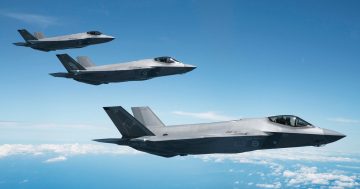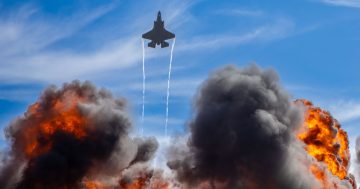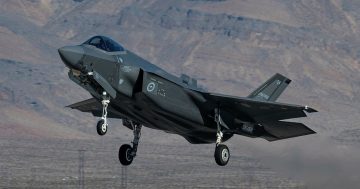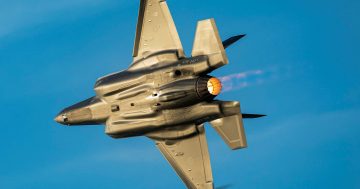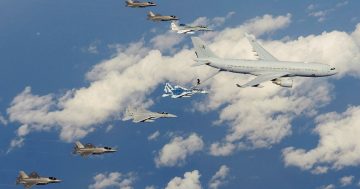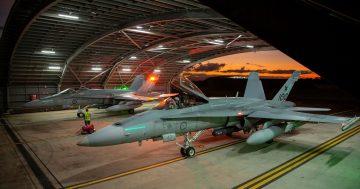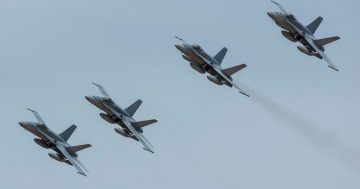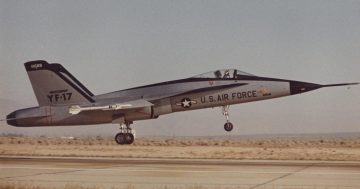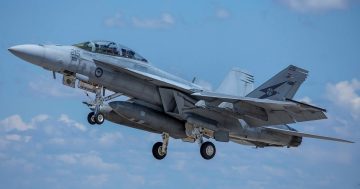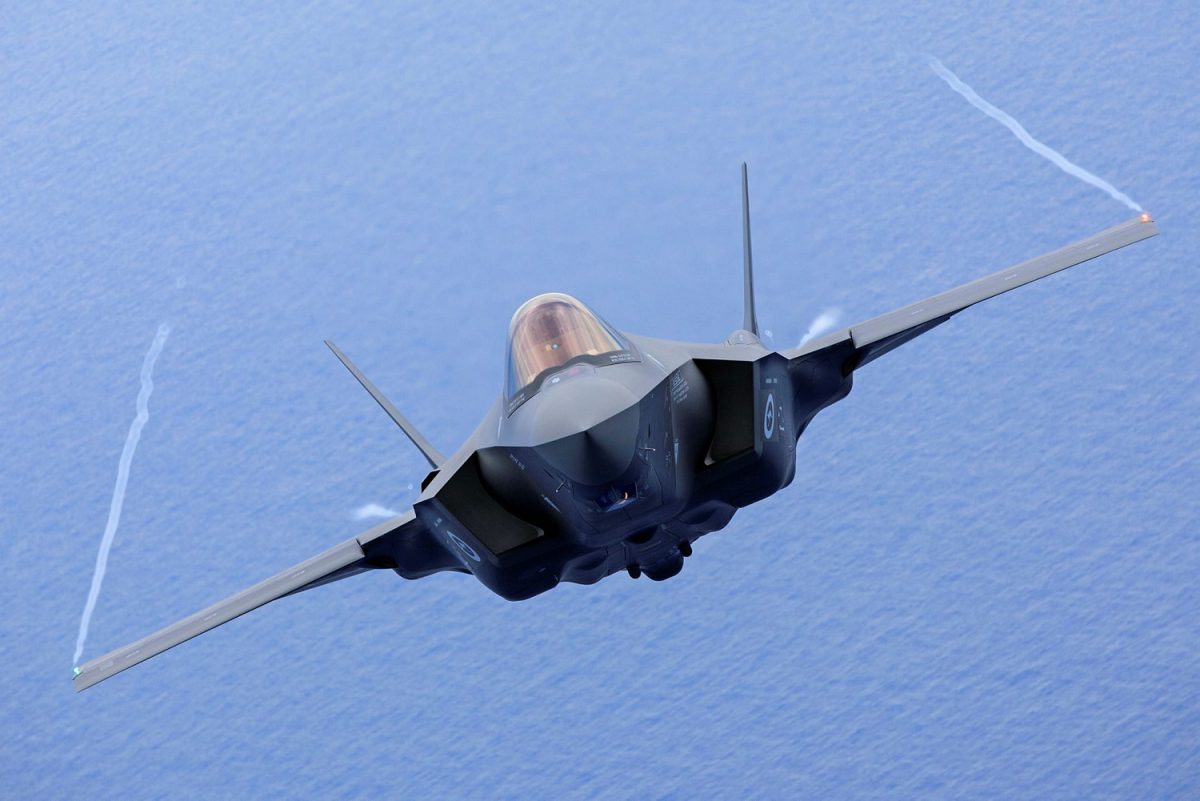
An RAAF F-35A off the NSW coast. Photo: ADF.
After years of delays and cost blowouts, the multinational Joint Strike Fighter (JSF) program to develop a fifth-generation multi-role combat aircraft is finally making big strides forward through the addition of new customers and the incorporation of advanced capabilities.
Originating in the early-to-mid-1990s as a program to develop a multi-role stealth aircraft that could replace several different aircraft types in the US, UK, and other partner nations’ air forces, the JSF has received more scrutiny and criticism – often deserved – than any other defence program in living memory.
Nine original partner nations – the US, UK, Canada, Netherlands, Norway, Denmark, Italy, Turkey and Australia – signed on to the program before an aircraft design was even selected, let alone flying. The advantage of becoming a partner was that your country’s industrial base would be awarded contracts for the production and sustainment of JSF aircraft components roughly equivalent to that country’s percentage of the total planned production run of aircraft.
The JSF was designed to replace the F-16A-D, F/A-18A-D, AV-8B/Harrier, A-10, F-111C, AMX A-11, and Tornado IDS/GR4 in service with the US and partner nations. Early in the program, the Pentagon specified that a single aircraft design would form the basis of an aircraft to meet the requirements of the US Air Force, US Navy and US Marine Corps, and the base design was developed into conventional takeoff and landing (CTOL), aircraft carrier operation (CV), and short take-off and vertical landing (STOVL) variants.

The Lockheed Martin X-35 JSF prototype was selected in 2001 to be the basis for the winning F-35 design. Photo: US Air Force.
Notwithstanding these commonality requirements, the aircraft was also to have a very low observable (VLO) or stealthy profile, internal weapons bays, the latest advanced sensors, and be capable of employing current and future advanced weapons, all the while remaining no more expensive than current-generation fighters!
Defence giant Lockheed Martin was selected by the Pentagon’s Joint Strike Fighter Program Office (JPO) in 2001 to build the F-35 Lightning II as the F-35A CTOL, F-35B STOVL, and F-35C CV, and the first F-35A made its maiden flight in 2006.
But as with most programs that start with politically mandated design elements, these requirements were an engineering ”bridge too far”, and this led to a major redesign of all three variants, which added nearly a decade and many billions of dollars to the development program.
Australia signed on as a partner in the program in 2002. The announcement by the Howard government was met with derision by elements of the Australian defence community and media, particularly as no competitive analysis of alternatives to replace the Royal Australian Air Force’s (RAAF) ageing General Dynamic F-111 bombers and McDonnell Douglas F/A-18A/B Hornet fighters had apparently been conducted. Commentators said the F-111 should have been further upgraded and retained, or suggested the Boeing F-15 Eagle or F/A-18E/F Super Hornets, Dassault Rafale, Eurofighter Typhoon, or other alternatives should have been considered. But none of these offered anything like the potential capabilities of the fifth-generation F-35.
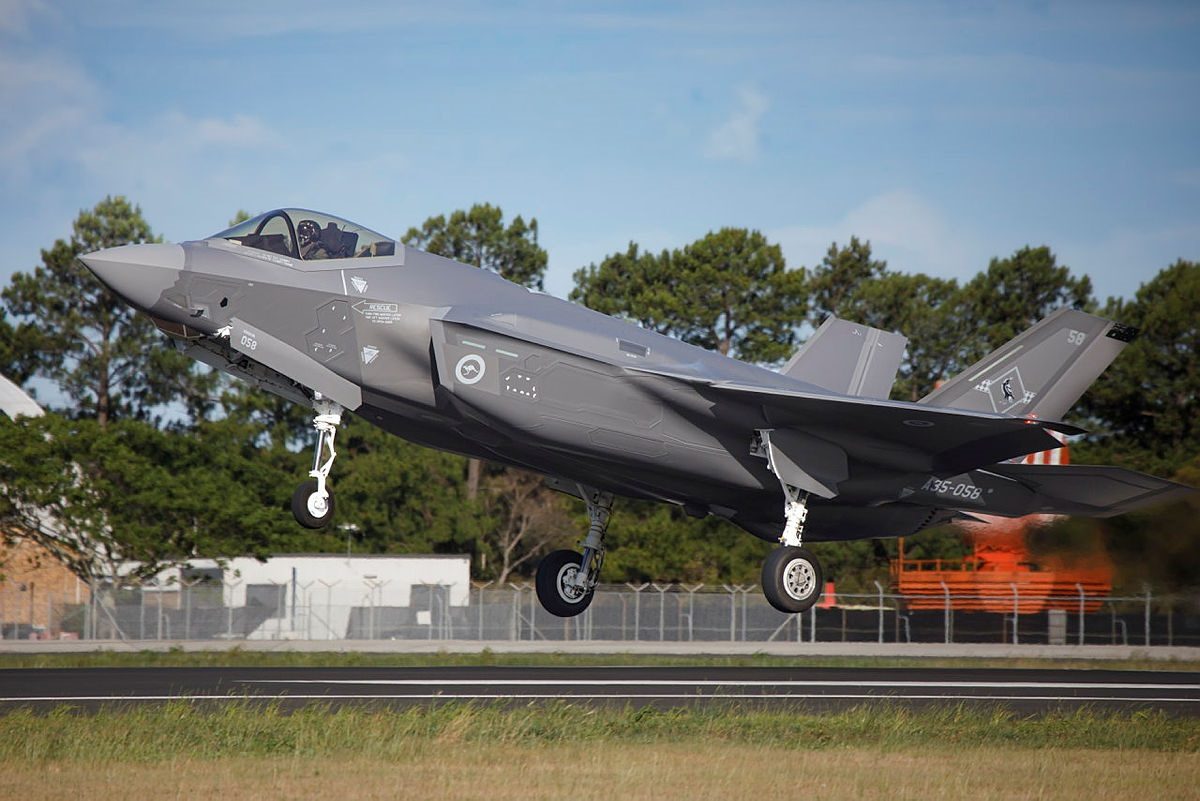
The RAAF’s 58th F-35A arrives at Williamtown near Newcastle in December 2022. Photo: ADF.
But as the multiple delays and spiralling costs added up, the RAAF was forced to substantially upgrade its Hornets to keep them operationally viable, as well as buy a ”bridging’’ capability of 24 F/A-18F Super Hornets to replace the F-111s, which were deemed no longer suitable to be upgraded. Subsequent governments on both sides of politics promised to review Australia’s F-35 acquisition, but all elected to persist with it.
Originally projected to achieve an initial operational capability (IOC) with the RAAF in 2012, Australia didn’t receive its first two F-35As until 2014, while its first squadron wasn’t stood up until 2018. The RAAF finally achieved IOC in 2020 when it had successfully completed the basing and maintenance facilities at Williamtown near Newcastle, had conducted the first in-country pilot training course, and had successfully stood up its first training and fighter squadrons in-country.
All of the original partner nations have now either received or ordered F-35s, the exception being Turkey, which was suspended from the program in 2019 after buying advanced Russian air defence systems. Canada was the last of the original partners to commit when it inked an order for 88 aircraft in early January 2023, while nine other nations – Israel, Japan, South Korea, Belgium, Singapore, Finland, Germany, Switzerland and Poland – have also ordered or taken delivery of F-35s.
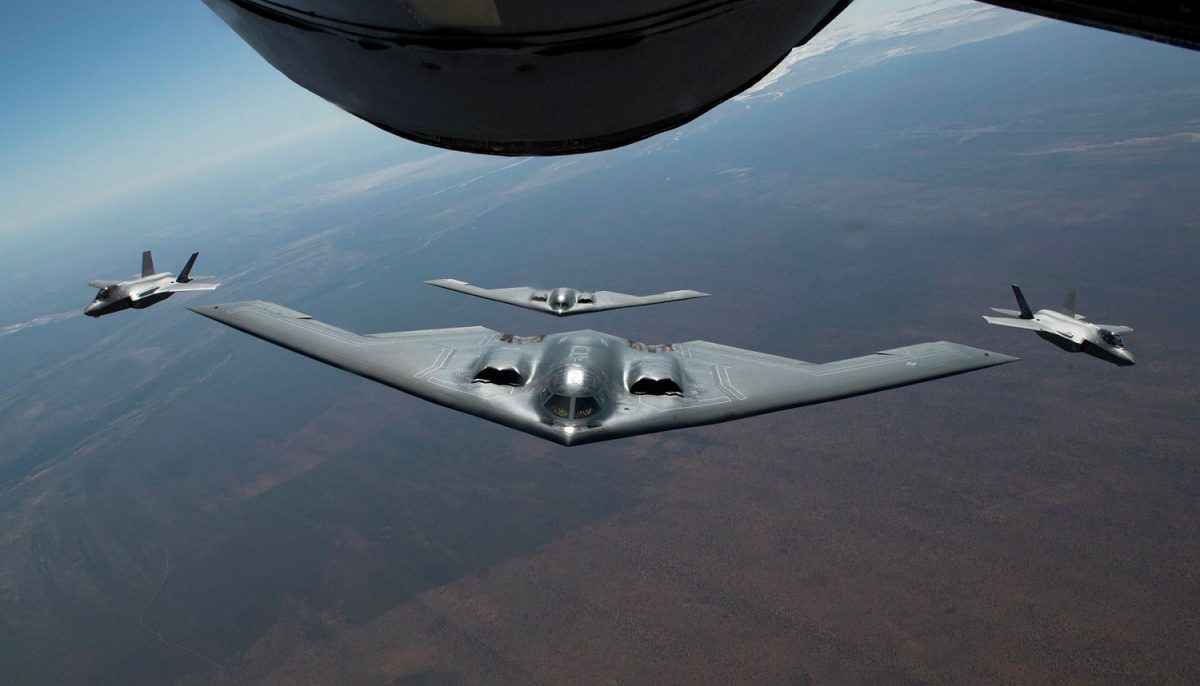
RAAF F-35As fly in formation with two US Air Force B-2A Spirit stealth bombers over Western Australia. Photo: US Air Force.
As of the end of 2022, more than 890 F-35s of all three models had been delivered to the partner and customer nations, and the global fleet has logged a total of more than 610,000 flight hours.
Apart from the growing order books, the aircraft has successfully made its operational debut, with the US, UK and Israel all flying combat missions in recent years. In addition, the global fleet will soon start receiving its first major operational upgrade, with the tech refresh 3 (TR3) hardware and Block 4 software packages being rolled out from later this year, promising to provide new capabilities not even envisaged when the aircraft was designed.
So far, Australia has taken delivery of 59 of the 72 F-35As it has ordered, while the remainder are expected to be delivered by late 2023. The RAAF now has one training and three fighter squadrons flying the jet from Williamtown and Tindal near Katherine in the NT, and plans to declare the F-35A fully operational by the end of this year.
The RAAF has successfully deployed the aircraft on multiple local and international major exercises and, by all reports, the aircraft’s capability has exceeded all expectations against all-comers.
Also this year, a decision on whether to acquire an additional 28 F-35As to fulfil Australia’s requirement for 100 aircraft is expected, with these aircraft to be delivered by the end of this decade.
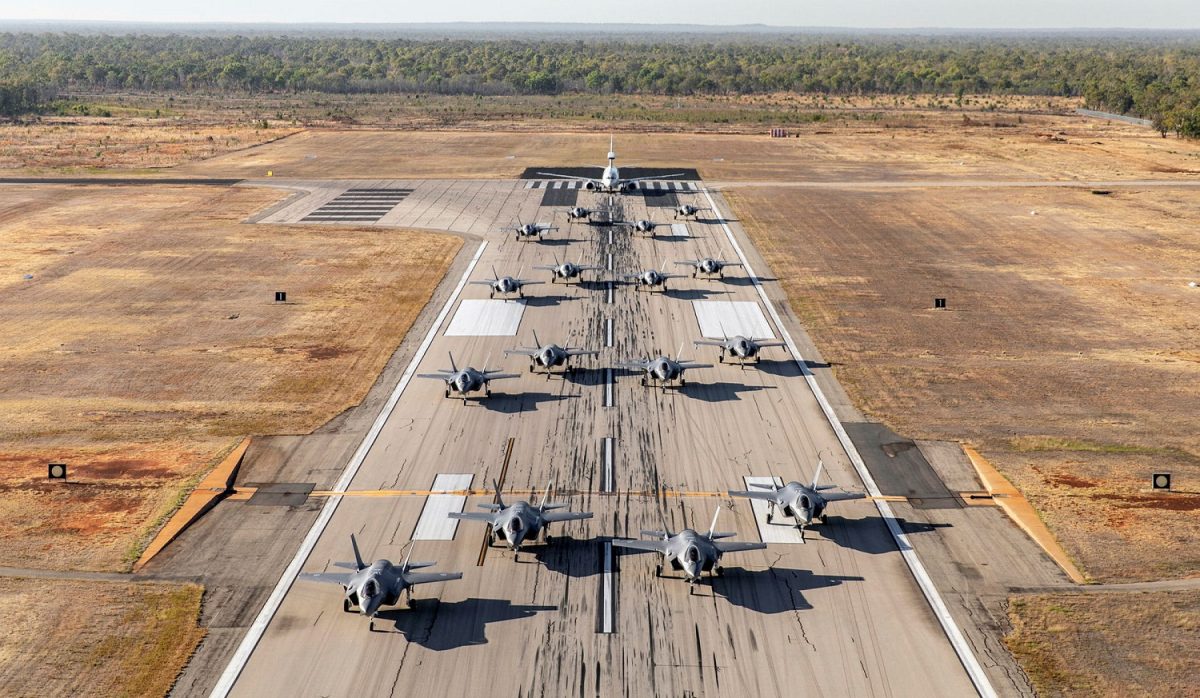
RAAF and US Marine Corps F-35s conduct an ”elephant walk” show of force at RAAF Base Tindal in the Northern Territory. Photo: ADF.












